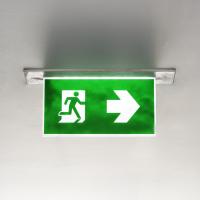Focus on: Where would 2 year olds choose to live?

"We cannot always build the future for our youth, but we can build our youth for the future.” Franklin D. Roosevelt
For several years, research evidence has demonstrated that investment in high quality early childhood education and care (ECEC) brings long-term benefits to individuals and societies that far outweigh the costs of providing these educational opportunities. Yet In Europe, of the 16 million children under three years old, only 5 million attended ECEC services in 2011. Where were the rest? Why are so many not participating in ECEC?
Across Europe, according to Eurydice's report 'Key Data on Early Childhood Education and Care in Europe – 2014' ECEC conditions differ dramatically in relation to governance, access conditions, capacity, cost, quality and the philosophy underpinning the system. If we look at the conditions for two year old children, an age where parents can rarely choose to stay at home without losing previous employment, these differences become clear.
Most ECEC provision for two-year olds takes place in crèches, a French term now adopted in English to denote 'a nursery where babies and young children are cared for during the working day'. The main function of this type of establishment is to enable parents - or, let's be honest, mostly mothers - to return to their work after often rather short periods of maternity leave. Crèches normally fall under the responsibility of the Ministry of Welfare, Family or Social Affairs and, as childcare is the main function, an educational curriculum is rarely specified. In most countries they are public, or publicly subsidized to a large extent.
A few countries with a more liberal welfare state philosophy stand out. In Cyprus, Luxembourg and the United Kingdom, young children are considered the responsibility of parents, and state "interference" is minimised. In reality, most two-year olds attend private ECEC with rather high fees. For example, the average monthly fees for a 40-hour week reach £754 (€950) in England.
In contrast, most Nordic countries provide considerable support to parents in their childcare responsibilities – initially through extensive parental leave designed to enable both parents to contribute to early stage childcare, and then through ECEC provision. This provision is considered as a child's right and fees are therefore low. In Sweden parents on average pay SEK 1257 (€136) for a full time place for a two-year old. Usually the staff/child ratios are also low (4/5 children per adult), staff are highly educated and there is an educational curriculum to be followed.
In the former communist EU member states, ECEC systems that were mainly related to women's employment have been largely dismantled during the 1990s. There is a tendency, like in the Nordic countries, to offer longer periods of maternity/parental leave. Thus in Bulgaria, the Czech Republic, Hungary and Romania, relatively well-paid childcare leave lasts up to two years. However, unlike in the Nordic countries, the parental leave is mainly taken by the mother. Moreover there is no notion of subsequent ECEC provision being viewed as a child's right. Places are limited and waiting lists can be long. The quality of services that children face also varies a lot. In Lithuania, for example, one staff member is responsible for 15 two-year-olds.
The philosophy and organisation of ECEC clearly has an impact on participation rates. In Denmark, Sweden, Iceland and Norway, over 90% of two year olds are in ECEC, while in central and eastern Europe, very few children begin ECEC at this age. Although in these countries public ECEC services are very cheap or even free (in Lithuania, Latvia and Romania), in Hungary one in three two-year olds attend ECEC, in the Czech Republic one in four, while in Poland it is only 6%. Higher rates are observed in Latvia and Lithuania, where about 50% of two-year olds attend ECEC.
So where are our continent's two year olds? Some are in publically-funded ECEC, some in private provision, and some are at home – but the chances of being in one or the other of these places depends greatly on where they were born. So considering these disparities, in which European country would you like to live if you were a two-year-old? Or if you were a parent of a two-year-old? If you need more information to make your decision, read the full report.
Authors: Andrea Puhl and David Crosier




